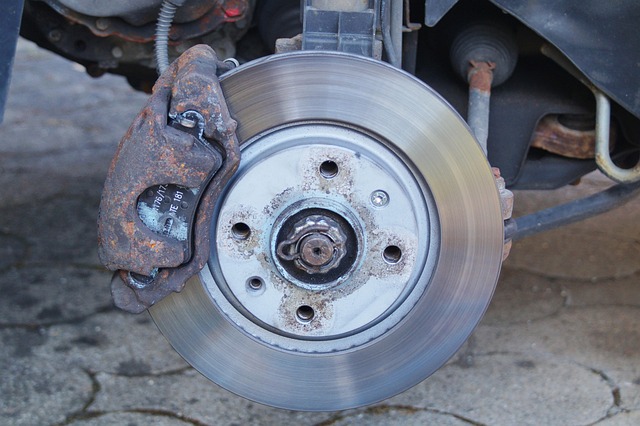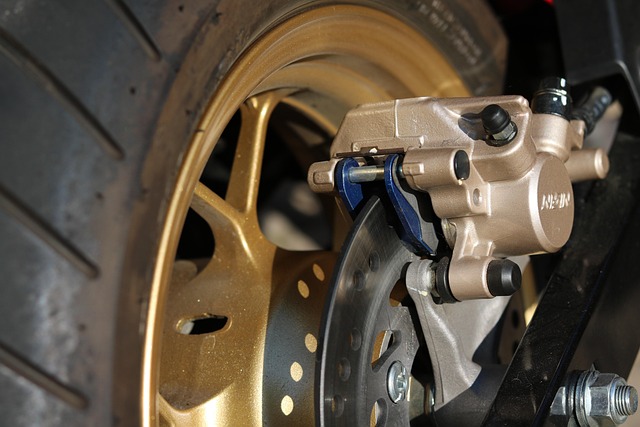Real-time brake diagnostics revolutionize vehicle safety and performance by monitoring key factors like wear, fluid levels, and temperature. Advanced systems like ABS, ESC, and regenerative braking ensure safety and sustainability in modern vehicles, with sensor technology enabling proactive maintenance. Regular inspections and staying informed about brake system advancements optimize performance, prevent failures, and reduce costs. Selecting appropriate brake systems for vehicle type and driving conditions is crucial for safety and efficiency, especially for autonomous vehicles.
Real-time brake diagnostics is a game-changer in automotive technology, ensuring safer roads and improved vehicle performance. This article delves into the intricacies of this innovative system, covering key aspects such as understanding real-time data collection, the critical role of select brake systems, sensor technology advancements, data analysis for optimal brake performance, and how timely maintenance enhances overall safety. By exploring these elements, we uncover why select brake systems are a fundamental component in modern vehicle diagnostics.
- Understanding Real-Time Brake Diagnostics
- Select Brake Systems: A Key Component
- Sensor Technology for Efficient Monitoring
- Data Analysis: Interpreting Brake Performance
- Enhancing Safety with Timely Maintenance
Understanding Real-Time Brake Diagnostics

Real-time brake diagnostics offer a revolutionary approach to ensuring vehicle safety and optimizing brake performance. This advanced technology enables the monitoring of brake systems in real-time, providing valuable insights into their condition. By seamlessly integrating sensors and diagnostic tools, vehicles equipped with these systems can continuously assess factors like brake pad wear, fluid levels, and temperature, among others. This data is then transmitted to onboard computers or external systems for analysis.
One key application of this technology is in the selection of brake systems for various vehicle types. For instance, off-road vehicles require robust braking solutions capable of handling extreme terrain conditions, prompting regular checks through real-time diagnostics. Similarly, semi-trucks benefit from scheduled semi-truck brake maintenance based on runtime and usage data, enhancing driver safety during long-haul transportation. The break pad wear indicator installation is another practical aspect facilitated by this technology, allowing for proactive replacement and preventing unexpected failures.
Select Brake Systems: A Key Component

The selection of brake systems is a critical aspect of real-time brake diagnostics, as it forms the foundation for vehicle safety and performance. Advanced technologies are increasingly being integrated into modern braking systems to enhance their efficiency and reliability. These include anti-lock braking systems (ABS), electronic stability control (ESC), and regenerative braking, which not only improve overall braking capabilities but also contribute to better fuel economy and reduced environmental impact.
When it comes to autonomous vehicles, the role of braking systems becomes even more significant. With the rise in automation, braking systems need to be robust enough to handle complex driving scenarios while adhering to stringent brake safety standards and regulations. Regular brake system inspections are crucial not just for maintaining optimal vehicle performance but also for ensuring passenger safety. Moreover, staying updated with the latest advancements in braking technology can help reduce the overall cost of maintenance by minimizing unexpected repairs, as innovative designs often include enhanced durability and reduced wear and tear components.
Sensor Technology for Efficient Monitoring

Sensor technology plays a pivotal role in modern vehicle diagnostics, especially when it comes to real-time brake monitoring. Advanced sensors embedded within select brake systems capture critical data, providing mechanics with valuable insights into brake performance and wear. These sensors can detect subtle changes in pressure, temperature, and vibration, enabling efficient troubleshooting of hydraulic brake system issues.
By integrating sensor technology, universal brake kits for custom cars offer enhanced safety and performance. Mechanics can easily access real-time information during brake inspections, which helps to identify potential problems before they escalate. This proactive approach not only saves on costly repairs but also ensures optimal vehicle safety. Moreover, regular sensor-based brake system inspections can help in avoiding unexpected failures, thereby reducing the risk of accidents.
Data Analysis: Interpreting Brake Performance

The analysis of data from real-time brake diagnostics is a key step in understanding and optimizing vehicle performance. By examining various parameters such as pressure, flow rate, and temperature within the hydraulic brake system, mechanics and engineers can interpret brake performance in real-world conditions. This data-driven approach allows for precise identification of any anomalies or inefficiencies, enabling targeted adjustments to ensure optimal braking efficiency.
When selecting brake systems, it’s crucial to consider factors such as vehicle type, expected driving conditions, and performance requirements. Different hydraulic brake system troubleshooting methods and tools can be employed to evaluate brake fluid types and uses, ensuring compatibility and peak performance. Moreover, universal brake kits for custom cars offer versatility, catering to diverse vehicle modifications while maintaining stringent safety standards.
Enhancing Safety with Timely Maintenance

In today’s world of advanced automotive technology, enhancing safety goes beyond basic vehicle features and takes on a new dimension with real-time diagnostics. One critical area that benefits from this innovation is brake systems. By implementing timely maintenance through select brake system monitoring, drivers can ensure optimal performance and improved safety. This is especially crucial in the context of autonomous vehicles, where braking systems play a pivotal role in ensuring seamless and secure operations on the road.
Real-time brake diagnostics allow for immediate detection of any anomalies or potential issues within a vehicle’s braking mechanism. This proactive approach enables drivers and fleet managers to take prompt action by sourcing high-quality car brake replacement parts online or exploring the used brake parts marketplace. As these technologies continue to evolve, they underscore the importance of staying ahead of maintenance schedules, ultimately contributing to a safer driving experience.
Real-time brake diagnostics revolutionize vehicle safety by providing crucial insights into brake performance. Through the strategic implementation of select brake systems and advanced sensor technology, fleet managers can efficiently monitor and maintain brakes. By analyzing data in real-time, they can ensure timely maintenance, enhancing overall safety on the road. This modern approach to brake diagnostics is a game-changer, ensuring folks stay secure while navigating today’s bustling world.
